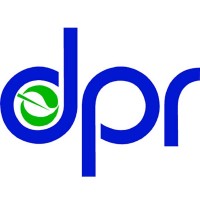Information on Chlorothalonil
Find information on the registration status, continuous evaluation and mitigation measures in California to regulate this active ingredient. An active ingredient is the chemical that makes a pesticide work on a target pest.
Active Ingredient: Chlorothalonil
Type of Pesticide: Fungicide
California Registration: Yes
EPA Registration: Yes
Fumigant: No
California Restricted Material: No
Toxic Air Contaminant (TAC): No
Volatile Organic Compound (VOC): No
Potential Groundwater Contaminant: Yes
Reevaluation Status: None
Chemical Class: Organochlorine
DPR Chemical Code: 677
Recent Reports and Announcements
- Potential for Chlorothalonil Movement to California Groundwater as a Result of Agricultural Use
- Results for Study GW10A: Ground Water Protection List Monitoring for Azoxystrobin, Chlorothalonil, Dichloran, and Iprodione
- Summary of Japanese Beetle Eradication Program Monitoring for Chlorantraniliprole in Sacramento Country, 2021-2023
Risk Evaluation and Mitigation Documents
Historic Documents
- March 2013 – Lompoc Monitoring Report
- January 2004 – Final Report for the 2002 Application Air Monitoring for Chlorothalonil and Methamidophos in San Joaquin County (Appendices)
- November 2003 – Final Report for the 2002 Ambient Air Monitoring for Chlorothalonil in Fresno County (Appendices) (Corrections)
- January 2002 – Use Information and Air Monitoring Recommendations for the Pesticide Active Ingredients Acephate, Chorothalonil, and Methamidaphos
- August 1999 – Chlorothalonil - Risk Assessment Rebuttal: Zeneca Response to CalEPA DPR Draft Chlorothalnil Risk Characterization Document (December 10, 1998)
- October 1998 – Inhalation Exposure of Chlorothalonil
- February 1998 – Contact Dermatitis in California Nursery Workers: Part I. Surveillance of Skin Disease
- August 1996 – Compilation of Clothing Penetration Values: Harvesters
- April 1996 – Greenhouse Pesticide Mixer/Loader/Applicator Exposure Study
- July 1995 – Study to Evaluate the Urinary Metabolites of Chlorothalonil Following Dermal Application to Male Rhesus Monkeys, Development of Method for Monitoring Exposure of Workers to ASC 2787 (Chlorothalonil)
- April 1991 – Dermal Exposure of Mixer/loaders, Applicators and Harvesters to Captan, Chlorothalonil and Folpet (Poster Presentation at 9th Annual Meeting, Society of Toxicology & Chemistry, 1988)
- September 1989 – Field Worker Exposure to Chlorothalonil While Picking Bush Grown Tomatoes in Stanislaus County California
- June 1989 – Worker Exposure to Chlorothalonil Residues During the Harvest of Fresh Market Pole Tomatoes
- April 1989 – Dislodgeable Foliar Residues of Chlorothalonil (Bravo) on Row Crops in California During 1987
- September 1988 – Chlorothalonil Exposure to Workers on Mechanical Tomato Harvesters
- February 1988 – A General Survey of Foliar Pesticide Residues and Air Concentration Levels Following Various Greenhouse Applications, 1986
- November 1987 – A Study to Establish Degradation Profiles for Six Pesticides (Triforine, Endosulfan, Chlorothalonil, Sulfotep, Dodemorph Acetate, and Daminozide) Used on Ornamental Foliage in San Diego County California During Fall 1986
